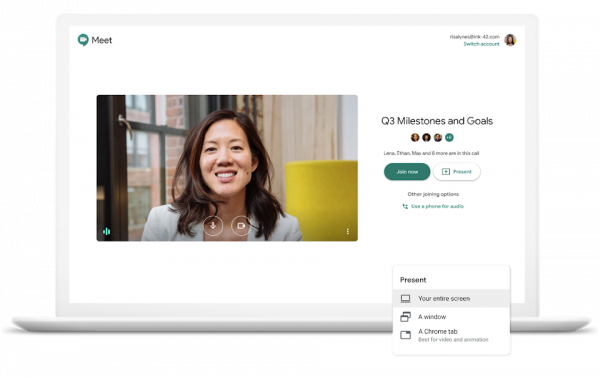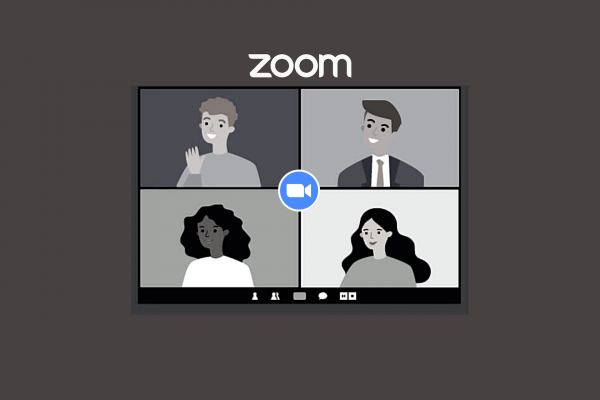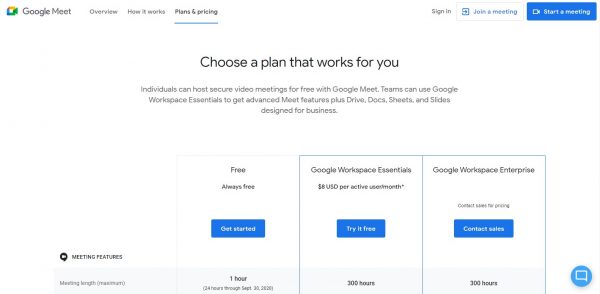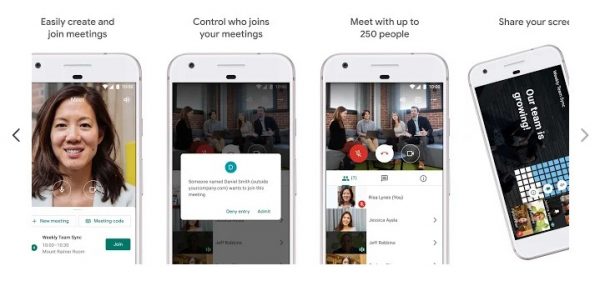Working from home seems to be the new normal, so as the needs to communicate with your workmates online. Currently, two competing video conferencing apps are fiercely battling for the home workspace: Google Meet vs Zoom. These two apps have features that can help you in communicating with your bosses and your teammates. You can use these not just on your PCs but also on your Android and iOS devices.
Today, we shall learn which app is better for communicating from our home offices. Is it Google Meet or Zoom? But before that, we shall first lay the foundations of what web conferencing is and how it differs from your traditional chat apps.
What Is Web Conferencing?

It is very well known that Google Meet and Zoom are both examples of web conferencing services. These apps cater to Internet-based conferencing. Conferencing services extensively used hardware such as telephones, satellites, speakers, microphones, and cameras in its first years.
Nowadays, most conferencing services use the Internet for communication. You would not need to learn any complicated software to set up a virtual conference in your home. You will only need a smartphone at the very least to do a meeting online — it already has a built-in microphone, speakers, and camera. This conferencing technology we use today is called “web conferencing.”
Following this line of thinking, we can say that messaging apps like Skype or Facebook Messenger can be technically classified as web conferencing apps. These apps also have audio call and video call functions that can be seen on Google Meet and Zoom.
How Does Cloud-Based Conferencing Work?

Back in the day, traditional video conferencing require a lot of hardware. This will require a lot of headphones or speakers, web cameras, telephones, and even satellites. This can ramp up the costs just for this “high-tech” way of communication. That is why cloud-based conferencing is the more practical way of conducting virtual meetings.
Cloud-based conferencing works like your traditional video conference. However, it uses your devices to connect to the cloud server of the app of your choice to communicate with your teammates. This significantly reduces the expenses of the company because there is no need to buy or rent high-end computer servers or depend on your telephone connection.
Google Meet and Zoom are both web and cloud-based conferencing apps. They use their own servers when meetings are being conducted. Now, you don’t necessarily need to sit down and turn on your PC to conduct virtual meetings. All you need is your phone and some earphones and you are good to go.
Video Chat vs Cloud-Based Conferencing

Video chat and cloud-based conferencing are sometimes being interchanged because they almost have the same meaning and purpose. They both provide audio and video communication services over the Internet.
Video chats mostly cater to one-on-one interaction. Only recently did messaging apps introduce group calling, which lets you talk simultaneously with a handful of friends. However, video chat apps usually can’t handle more than 10 people.
On the other hand, cloud-based conferencing can handle communications between a large number of people, from hundreds to even thousands. It is possible by utilizing a cloud solution, which is more manageable and secure. You cannot also simply enter an online conference room. A meeting ID or link and password are required when accessing a conference.
Google Meet vs Zoom: Overview
Now that we know the differences between personal video chat and cloud-based conferencing, let us now dive into the features of the two most popular video conferencing apps. This will help you choose a more suitable app for your everyday online meetings.
As already mentioned in the introduction, both video conferencing services are free to use with some limitations. There are also paid versions of this app especially catered for personal, business, and enterprise use.
Google Meet Services

Here is the pricing plan and features for Google Meet’s services:
| Features | Free Plan | Google Workspace Essentials | Google Workspace Enterprise |
|---|---|---|---|
| Pricing | Free | $8/month per user | $25/month per user |
| Maximum Participants | 100 | 150 | 250 plus 100,000 viewers for live-streaming |
| Maximum Number of Meetings | Unlimited | ||
| Meeting Length | 1 hour | 300 hours | |
| Record and Save Meetings Option | No | Yes (on Google Drive) | |
| File-Sharing Thru Google Drive |
No | Yes | |
There are many more features with all the plans. Two-factor authentication is implemented with all these plans so you can feel secure with your meetings. Everyone can also share their screens to share their own inputs during these meetings. Google can also provide live closed captions on your meetings. This enables everyone to clearly understand the agenda of the organized meeting. Take note that Google Meet is part of the Google Workspace. This is packed together with a slew of essential office apps such as Docs, Sheets, Slides, Sites, and many more.
If you are not that keen on using Google Meet on your work or just want to “hang out” with your friends, there is an alternative app from Google called Google Hangouts. This app is tailor-made for those who just want to hang out with friends. Go hit up your hundreds of friends through Google Hangouts.
Download Google Meet on Android
Zoom Services

Now let us dive into Zoom. What are the main features of Zoom? How much are its plans for personal, business, and enterprise use?
| Features | Basic | Pro | Business | Enterprise |
|---|---|---|---|---|
| Pricing | Free | $14.99/month or $149/year | $19.99/month or $199/year | $19.99/month or $199/year |
| Maximum Participants | 100 | 300 | 500 | |
| Maximum Meetings | Unlimited | |||
| Meeting Length | Unlimited (one-on-one meetings); 40 minutes (group meeting) | 30 hours | ||
| Record and Save Meetings | Local Storage | 1 GB of Zoom Cloud and Local Storage | Unlimited Zoom Cloud and Local Storage | |
| File Sharing | Yes | |||
Aside from these features, Zoom offers add-on plans that you can top up on your monthly or yearly bill. These plans can perk up your online meeting experience with Zoom. For instance, if you want to conduct a meeting for the whole company, you can buy their “Large Meetings” Plan. You can hold a meeting for up to 1,000 participants, making it a comprehensive tool for every department in your company. Everyone can share their thoughts and inputs through this nifty add-on.
Google Meet vs Zoom: Which Is Better?
Now let’s get down to business. These two fiercely competing apps have riveting features that can be extensively used in your workspace. But which video conferencing app is better?
Free Features

As already mentioned above, both conferencing apps offer free services to their basic conferencing plans. Google Meet gives you one hour of meeting length regardless of the number of participants. It also does not require you to download the app if you are on your PC.
Zoom offers almost the same services as Google Meet but with its own perks and limitations. It offers 40 minutes of meeting length for group meetings. But unlike Google Meet, Zoom offers unlimited meeting length on a one-on-one conference. You need to download their PC app on your computer, though. Needless to say, the free features of Zoom give it an edge over its competitor.
Premium Features
You can boost up your meeting experience with their paid services. For starters, the Google Workspace Essentials and Enterprise plans give you 300 hours of meeting time. This is beneficial for those who need to collaborate with their teammates for long periods. This can be overkill for some, but at least you’ve got that huge allotment for your long periods of meeting.
It can also handle a lot of participants: 150 for Essentials and 250 for Enterprise option. Livestreaming is available if participation is not needed for each employee. This is more than enough if you are handling a small company or a startup business. But if you are handling a bigger company, this might not be suitable for your meeting needs. Participants who cannot join the video meeting can connect to the meeting via dial-in. As long as the participant uses a US number, anyone can join the Google meeting through their phones.
Meanwhile, Zoom is catered for those who want it big. This app can handle a maximum of 500 participants for its Enterprise plan. Its lower-priced plans can also handle hundreds of participants, thus enables everyone to partake on every agenda of the meeting. This is important for those who are managing a huge group of people under their umbrella. Meeting hours are a little bit short with 30 hours of allotted meeting time. But this is more than enough for your meeting needs especially if you don’t need that continuous and consistent flow of ideas on your brainstorming.
User Interface

Google Meet’s user interface (UI) tends to get confusing with its messy button placements. This will take time to get used to so it’s not that much of a biggie. Security is at its finest for you can only join a meeting through an invite URL. This gives you peace of mind against virtual gatecrashers who can interrupt your meeting for fun. You don’t need to worry if your colleagues have a different app for virtual meetings for it can also be integrated with other business apps like Skype for Business.
Google Meet can max out up to 720p video calls. This gives you a more butter experience on your video meeting provided that you have a high-speed Internet connection on your home.
How about Zoom’s user interface? It has got the same features as Google Meet. But its UI is much more intuitive than its Google counterpart. Its button placements are more appropriately placed. Sharing files is a breeze, too. Just share your files through the chatbox and you are good to go. Everyone can also collaborate interactively with its whiteboard feature where you can write your ideas. And when there’s a need to mediate the ideas, there’s this polling feature by Zoom so everyone can agree or disagree upon the ideas.
Similarly, it includes the ability to record your meetings. You can save your meetings in a video format on your PC for free. Cloud saves can be done, too, albeit for 1 GB of video only. And if you’ve got a cluttered room behind you, there are virtual backgrounds you can choose to your liking.
Security
Many adore Google Meet for its security, thanks to its two-factor authentication. Google does not share your encryption keys with any third-party providers, and it stays within the meeting. Once the meeting is done, this key is erased and cannot be retrieved. Now that’s what you call “tight security” amidst the age of the Internet.
If there is one major gripe with Zoom, it is its flawed security protocols. Zoom claims it has 256-bit AES encryption, but “Zoombombings” still occur. Zoombombings are defined as anonymous people crashing into random Zoom meetings. There are many instances where Zoombombings occur that it even gets featured on the news. Zoom has already led a crackdown against these intruders. We just hope Zoom will further tighten its security against them.
Device Compatibility
Both conferencing apps are compatible with Android and iOS devices. They can also run on your PC and Mac. Zoom gains an edge with its compatibility with Linux. So if you’ve got a Linux-run PC with you, go get Zoom as your video conferencing tool.
Final Verdict: Which Is More Suitable for You?
Now that we’ve dissected these conferencing apps, perhaps you might still be torn which app is more suitable for your meeting needs. What is the right app for you?
If you are handling a small team or a company and don’t need that many minutes for your group huddles, Google Meet is for you. Its free 60-minute video conferencing service is more than enough for a small team. And if you’re on your PC, you don’t need to download an app. All you need is your browser and you can meet and huddle with your teammates.
But if you want to huddle with a large group, Zoom is the better choice for you. Its capacity to handle up to 300 participants gives the opportunity for everyone to voice their fresh ideas. They can also participate interactively with the whiteboard and poll features, thus gaining fresh ideas from your associates.
